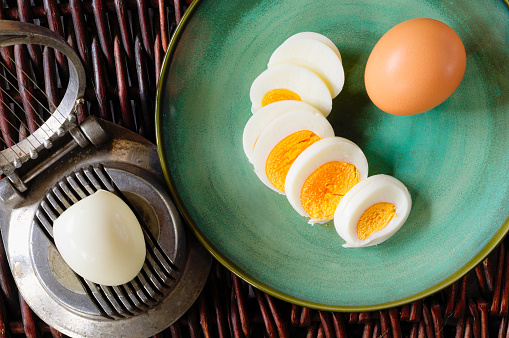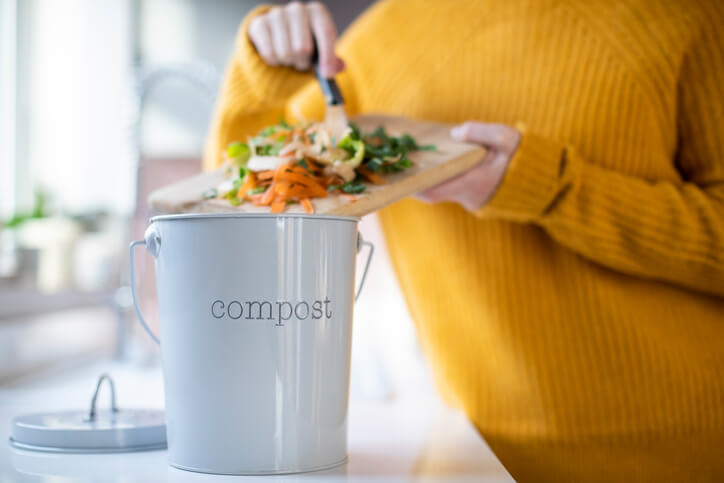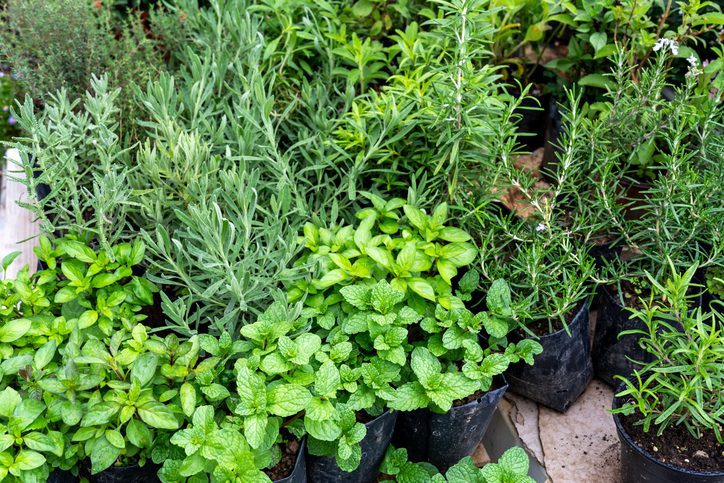My mother is a big part of why I am a dedicated cook. Not only did I learn to recognize the right consistency of biscuit dough and how to salvage spoiled meals under Mom’s tutelage, she also made sure I understood the importance of good kitchen tools. Mom taught me that cooking is not only easier when you have the right tools, it can also be more fun.
SEE ALSO: The Kitchen of the Future
Unfortunately, I haven’t always been able to recognize the difference between good tools and novelty kitchen gadgets that solve a problem that doesn’t actually need a solution. I’ve owned every single one of the following 10 kitchen tools, and I’m here to tell you that you probably don’t need to bother buying any of them.
1. Cherry Pitter
I bought this tool during a brief love affair with baking pies from scratch. I wanted to make a cherry pie from fresh cherries, which I thought was going to be a long and messy process if I had to pit the fruit without the help of this specially-designed tool.
What I didn’t realize is that a single cherry pitter may speed up the process of removing stones from cherries slightly, but it’s only a marginal improvement. It took me nearly an hour to pit all the cherries necessary to fill a pie. In addition, no tool can make the removal of cherry pits anything other than messy.
The only time I’ve been glad to own this tool was when my children were toddlers. They loved fresh fruit, but whole cherries are a choking hazard. Having the pitter made it much easier to offer them delicious pitted cherries one at a time.
I have since learned that you can use a chopstick to pit cherries one at a time, or simply place several cherries under parchment paper, tap them with a mallet, and remove the pits with your fingers.
2. Pastry Cutter
I also purchased this tool during my pie-making kick, since it is a helpful for making pie crusts. Pastry cutters help you work solid fats, like butter, shortening, or even lard, into flour to make a dough. Any dedicated pastry chef needs one of these tools.
If you’re not a pastry chef, however, you can just as easily cut solid fats into flour with two butter knives—which was exactly how my mother taught me to make dough. You could also use a fork, a food processor, or a cheese grater, and any of these options would mean that you don’t have to store a bulky and sharp pastry cutter when it’s not in use. I finally got rid of mine after cutting my finger on it while searching for another tool in an overcrowded drawer.
3. Pie Crust Shield
Rounding out the trilogy of my pie-related purchases was the pie crust shield—which is the only item on this list that I still own and use with some regularity. A pie crust shield protects the edges of your pie from burning. Many pie recipes recommend covering the crust for all but the last 15 minutes of baking, and having a shield makes it very simple to do that.
But it is just as easy to cover pie crusts with aluminum foil, which I did for years before buying my pie crust shield as a favor to a friend who was selling kitchen gadgets through home-based sales parties. But if I didn’t already own this tool, I certainly wouldn’t miss it.
4. Egg Slicer
Hard-boiled eggs may be one of the easiest foods to prepare, but cutting freshly boiled eggs can be exasperating. Many home cooks preparing egg salad end up mashing the eggs with a knife and letting the mustard and mayonnaise cover the misshapen pieces. Trying to thinly and uniformly slice eggs for a chef’s salad can be even more frustrating, since the consistency and shape of eggs do not allow for even cuts—at least not easily.
Although the hard-boiled egg slicer I purchased seemed to be the answer to these egg-related dilemmas, I found it wasn’t worth it. That’s mostly because I only need to slice eggs about once or twice a year, and an egg slicer takes up vital real estate in a kitchen. They are oddly shaped and somewhat bulky, and I found there was no convenient place to store mine. I often forgot I had it until after I had finished putting together my egg salad.
When making a chef’s salad without an egg slicer, the trick is to use a wet, serrated knife, wiping the blade after each cut. It is also much easier to cut cold eggs than warm ones.
If you are making recipes with hard-boiled eggs as often as once a week, a slicer may be able to save you some time and headaches—but for the average cook who only needs precisely sliced eggs for a few recipes, you can skip it.
5. Apple Slicer
The apple slicer I purchased was a simple hand tool. Place the slicer on top of the apple, and with brute force, push it down over the fruit to cut it into eight equal slices and remove the core, all at the same time.
There were a couple of problems with my slicer. First, either it or the apple would wobble if the fruit wasn’t perfectly shaped. Second, even when the apple was perfect, I did not have the strength to force the slicer all the way through to the bottom of the apple. I’d have to push it through from the blade side, which meant I could cut myself. Considering the fact that I’d bought this partially so my kids could slice their own apples, this tool was definitely not worth the money.
6. Pasta Measurer
Whenever I made pasta, it always seemed as though I either didn’t make nearly enough, or made more than my family could eat in a week.
I was delighted to discover that pasta measurers could help me figure out the correct amount of dry pasta to throw into the boiling water. These tools have holes in them, and you place your strands of long pasta in the hole corresponding to the number of servings you want to make.
Although this was a pretty useful tool to have in a spaghetti-intensive household like ours, unbeknownst to me, I already had a pasta-measuring tool in my kitchen: The hole in the center of the pasta fork corresponds to a single serving of spaghetti.
7. Pizza Stone
Pizza stones are round baking surfaces made of ceramic or stone, and they are supposed to radiate heat more evenly, as well as help absorb moisture, which theoretically ensures a crispier pizza crust.
The big problem with my pizza stone was its size. The only place I could keep it was in the oven, which meant that I was forced to move the stone every time I used the oven for something that wasn’t pizza. Considering that these types of stones are not light, this became a major pain. In addition, I could not taste the difference between a pizza baked on the stone or on a baking sheet.
Finally, baking stones tend to crack with use. When mine cracked, I threw it away and didn’t replace it.
8. As-Seen-On-TV Defrosting Tray
According to the infomercials on defrosting trays that ran during the 1990s, you could defrost completely frozen chicken and steak in minutes due to the superconductive metal alloys on the tray. For just $20, you could get frozen meat dinner-ready in record time. To prove it, the infomercial showed the audience how an ice cube melted in seconds when placed on a defrosting tray.
I purchased one in a retail store in the late 1990s. When I got my defrosting tray home, I placed an ice cube on it, which miraculously melted, as advertised. Where the tray seemed to have trouble, however, was in defrosting meat quickly.
Although there does seem to be evidence that these trays speed up the defrosting time somewhat, it still takes at least one to two hours for meat to defrost on the tray at room temperature. I had hoped this product would save me on the days when I forgot to defrost something for dinner, but it still requires far more time than a forgetful and harried cook generally has.
9. As-Seen-On-TV Blenders
My disappointment with the defrosting tray did not keep me from plunging into another “as-seen-on-TV” purchase: the complete blending system that would make any and all cooking a walk in the park. These blenders promised easy blending, chopping, mixing, and whipping, which would revolutionize my cooking.
To be fair, these systems do have pretty nifty designs. With the model I bought, I can easily change out blades and it comes with multiple cups so you do not have to wash one in order to blend something different—both points in its favor.
But overfilling a cup—which I seem to do nearly every time I use the machine—leads to spillage into the motor assembly, which is next to impossible to clean. In addition, finding storage for all the various pieces is tough for anyone with a small kitchen, especially if you already own a blender and a food processor. This tool can make some kitchen tasks moderately easier—I find that making whipped cream is simpler with this tool than any other—but that hardly makes buying the whole shebang worth it.
10. Juicer
Ever since Jack Lalanne proclaimed the power of juice, Americans have been interested in juicing their fruits and vegetables. I was re-introduced to the purported health benefits of juicing by the documentary “Fat, Sick, and Nearly Dead,” which convinced me to pull the trigger on the purchase of a $300 juicer.
Although the juicer did get a great deal of work during its first eight months in my house, it has been collecting dust on top of my refrigerator for well over a year and a half now. The juicer is cumbersome and heavy and requires multiple steps (and quite a bit of counter space) to set up. Plus, juicing is not nearly as good for you as we’ve been led to believe. Unless you have a specific need to juice your food, this is definitely not a tool you need to spend money or counter space on.
Don’t Get Gadget-Happy
Figuring out the best way to handle a cooking problem is generally more about being creative with ingredients and technique than snagging a problem-solving tool. Before you decide to buy a kitchen tool, see if you can find a solution using the utensils you already have. A little creativity in the kitchen can save you money and much-needed drawer space.
READ MORE: Organize Your Pantry in 10 Easy Steps This Weekend







I have found they come out with more more useless products I personally have learned to not get so gadget help me